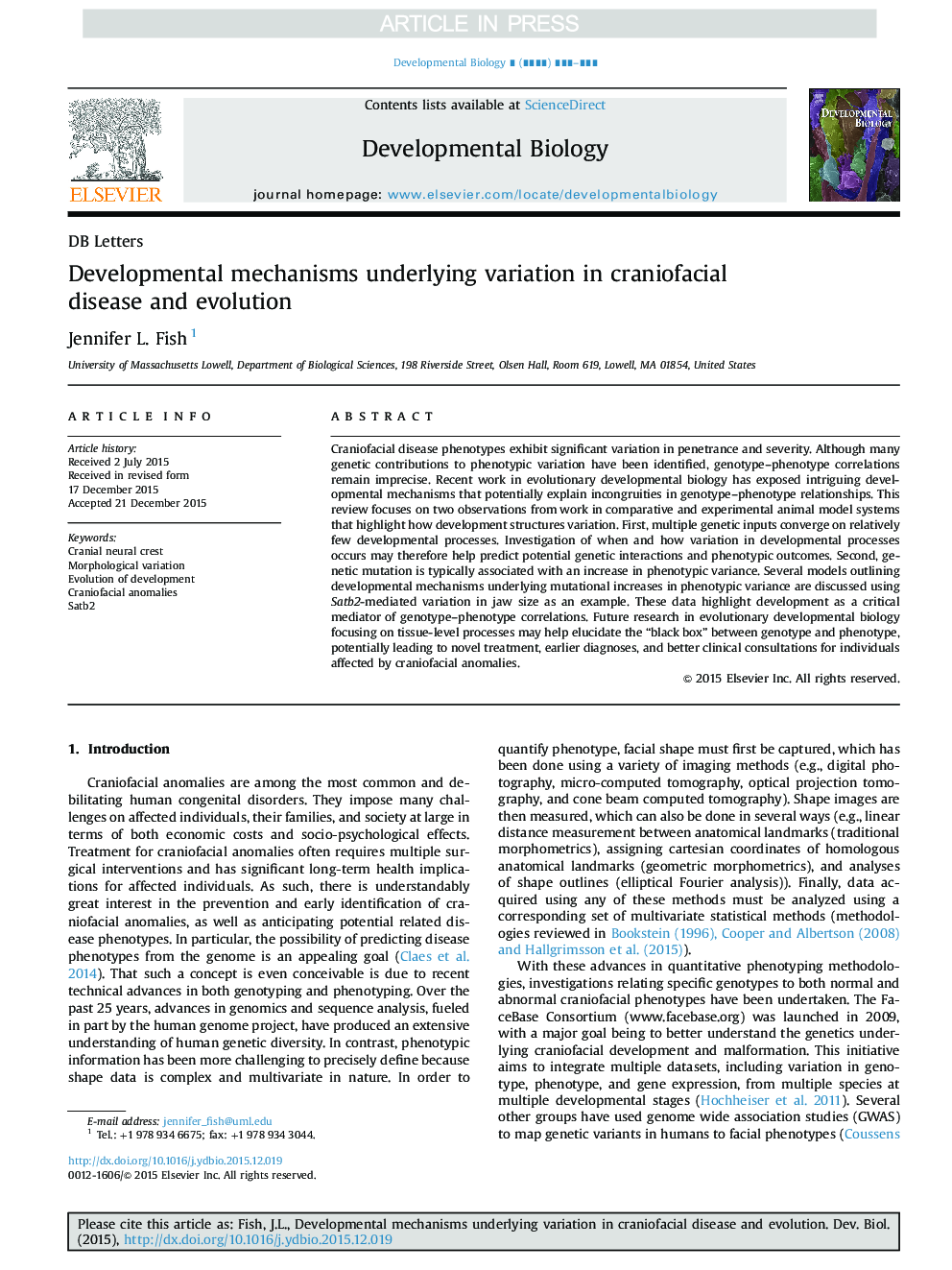| Article ID | Journal | Published Year | Pages | File Type |
|---|---|---|---|---|
| 10931105 | Developmental Biology | 2016 | 10 Pages |
Abstract
Craniofacial disease phenotypes exhibit significant variation in penetrance and severity. Although many genetic contributions to phenotypic variation have been identified, genotype-phenotype correlations remain imprecise. Recent work in evolutionary developmental biology has exposed intriguing developmental mechanisms that potentially explain incongruities in genotype-phenotype relationships. This review focuses on two observations from work in comparative and experimental animal model systems that highlight how development structures variation. First, multiple genetic inputs converge on relatively few developmental processes. Investigation of when and how variation in developmental processes occurs may therefore help predict potential genetic interactions and phenotypic outcomes. Second, genetic mutation is typically associated with an increase in phenotypic variance. Several models outlining developmental mechanisms underlying mutational increases in phenotypic variance are discussed using Satb2-mediated variation in jaw size as an example. These data highlight development as a critical mediator of genotype-phenotype correlations. Future research in evolutionary developmental biology focusing on tissue-level processes may help elucidate the “black box” between genotype and phenotype, potentially leading to novel treatment, earlier diagnoses, and better clinical consultations for individuals affected by craniofacial anomalies.
Keywords
Related Topics
Life Sciences
Biochemistry, Genetics and Molecular Biology
Cell Biology
Authors
Jennifer L. Fish,
